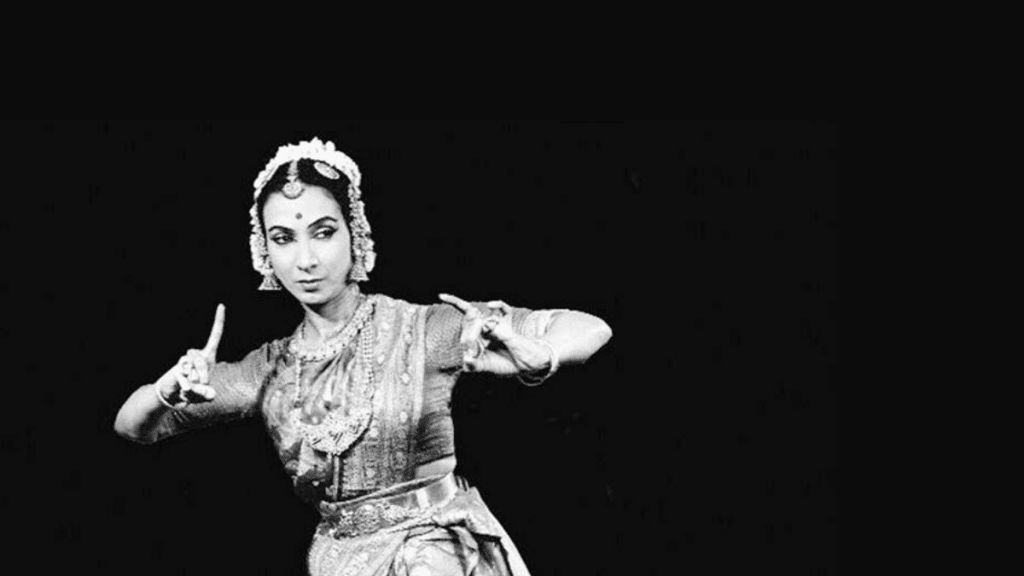The world of art is vast. From painting on the canvas to the pages of literature, all the activity that requires creativity and expression falls under this category. It has the capacity to transport an individual to a new world and experience magic. One such branch of art happens to be dance. Through fluid movements of the body and expressive gestures, a dance performer is able to tell a story without uttering a single word.
And in the world of this art, there are those whose contributions stand out forever as an example of human creativity and expression. Mrinalini Sarabhai, a name that resonates in the world of Indian classical dance, is one such luminary. The cultural landscape of India and the world will always be thankful for the unparalleled contributions she made in the field of Indian classical dance. Let’s delve into the remarkable legacy of this extraordinary artist.
The early years
Mrinalini Sarabhai was born on May 11, 1918, in Kerala, India. Born into a highly educated family of lawyers and freedom fighters of then colonial India, she got the opportunity to study in a boarding school in Switzerland and later on in the United States. From a young age, she displayed a keen interest in the art of dancing and under the guidance of Rabindranath Tagore at Shantiniketan, she realized her true passion.
Reviving Bharatanatyam
In the mid-20th century, Bharatanatyam, a traditional Indian dance form, was facing a crisis. The increasing influence of Western civilization had started to cause a decline in Indian classical dance forms. It was Mrinalini Sarabhai who played a pivotal role in reviving and popularizing this art form again. She trained rigorously under the legendary dance guru, Meenakshi Sundaram Pillai, and her dedication to the art was unparalleled. She was successful in mastering the intricate techniques of Bharatanatyam; however, she also adapted it to keep up with changing times and be more relevant to contemporary audiences.
Blending Tradition with Modernity
One of the defining features of Mrinalini Sarabhai’s dance was her ability to seamlessly blend tradition with modernity. She lovingly embraced the classical roots of Bharatanatyam but also combined them with contemporary themes and ideas. She was very skilled in conveying unique narratives that would resonate with people no matter their age and interest. She was beyond just a simple dancer, she was an artist, a storyteller, an Indian who was instrumental in preserving their cultural heritage.
Darpana Academy of Performing Arts
In 1949, Mrinalini Sarabhai and her husband, Vikram Sarabhai, an eminent scientist, founded the Darpana Academy of Performing Arts in Ahmedabad. Although this institution faced some hurdles in the early stages due to various reasons, it went on to become a renowned place for nurturing numerous talented dancers, musicians, and artists. Today, Darapana Academy has become a centre for cultural exchange, fostering creativity and artistic innovation.
Social Relevance through Dance
Mrinalini Sarabhai was a trailblazer not only in the realm of dance but also as a social activist. Her dance performances are often littered with powerful messages on contemporary social issues, including gender equality, environmental awareness, and communal harmony, which is relevant even now. She used her art to tell stories and provoke thought among her audiences. She was known for breaking away from the traditional boundaries of classical dance and initiating change.
Awards and Honors
Her contributions to the world of dance and her social activism did not go unrecognized. For her unparalleled commitment to the art of dance, she was decorated with numerous awards and honours. She received the prestigious Padma Shri and Padma Bhushan awards in the years 1965 and 1996 respectively. These are India’s third and fourth highest honours that can be awarded to a civilian. Her legacy continues to be celebrated through various accolades and tributes inside and outside of the country.
Passing the Torch
As she aged, Mrinalini Sarabhai focused on passing her knowledge and passion for dance to future generations. She was a very dedicated teacher, and many of her students have gone on to earn their own place in the world of dance. Her commitment to preserving and evolving the art form has ensured that her legacy lives on for a long time in the future.
Conclusion
Mrinalini Sarabhai’s legacy is a testament to the power art holds over society. She was not only dancing to her heart’s content, but she was successful in reviving a dying dance form and using it as a means to address contemporary issues of society and bring about positive change. Her pioneering, dedicated, and artistic spirit continues to be an inspiration to up-and-coming artists and audiences worldwide. Her legacy is a shining example of how art can transcend boundaries and leave an indelible mark on society. Mrinalini Sarabhai will forever be remembered as a true artist whose contributions to the world of dance and social change are immeasurable.
